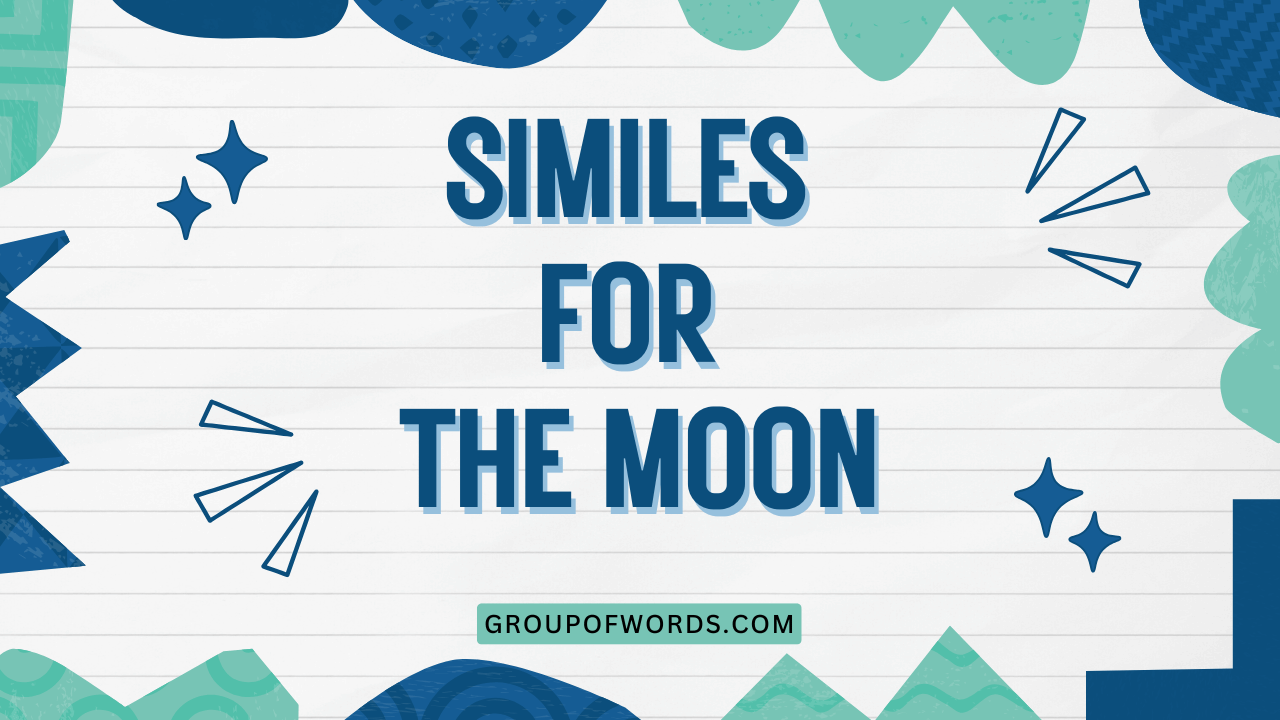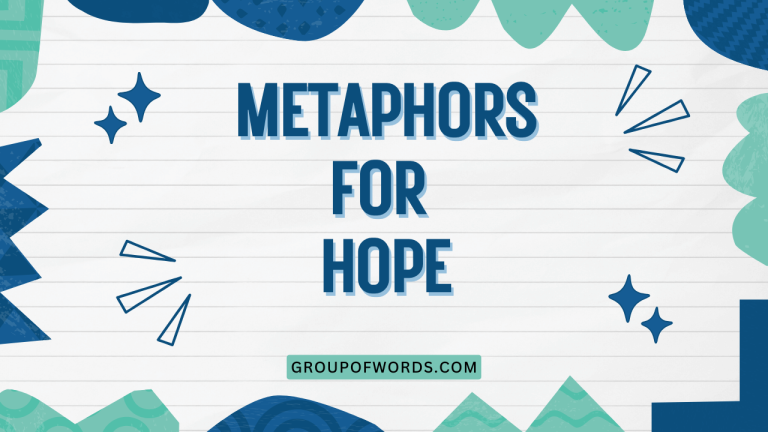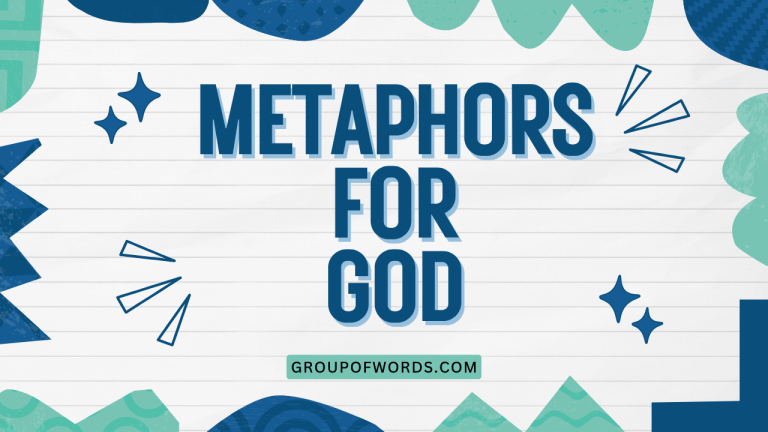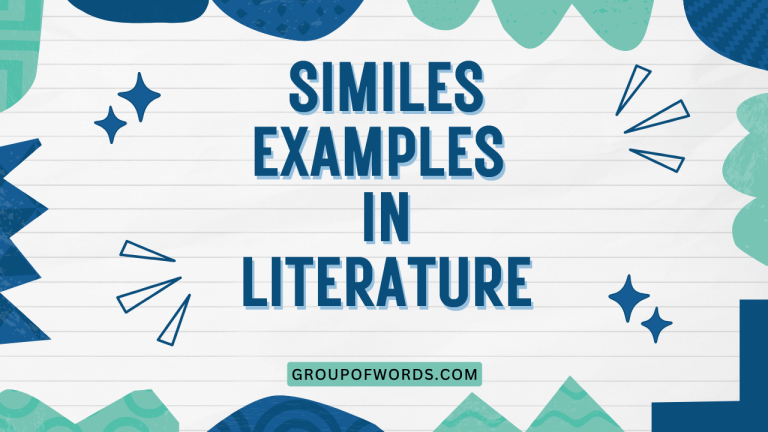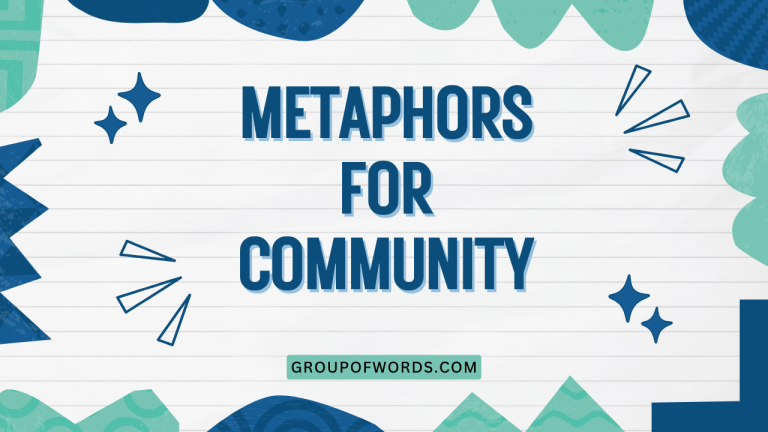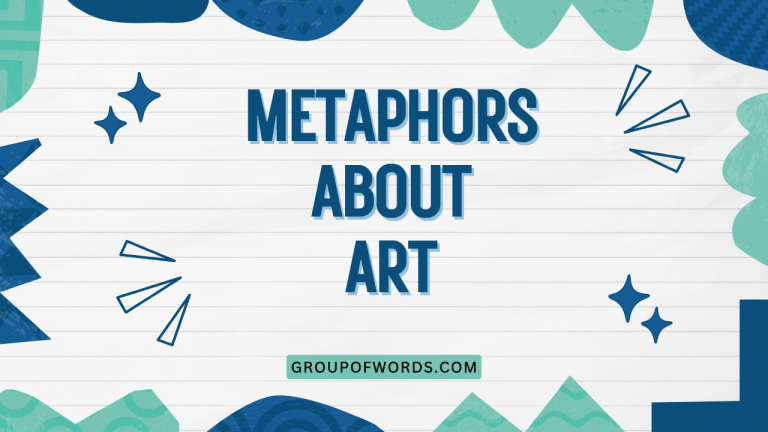Moon Similes: Illuminating Language with Lunar Comparisons
Similes are powerful tools in the English language that allow us to create vivid imagery and enhance our descriptions. By comparing seemingly unrelated things, we can draw attention to shared qualities and evoke deeper understanding.
The moon, with its ethereal beauty and mysterious presence, is a frequent subject of similes. Mastering the art of crafting similes for the moon not only enriches your vocabulary but also sharpens your creative writing skills.
This article will guide you through the intricacies of moon similes, providing definitions, examples, usage rules, and practice exercises to help you master this fascinating aspect of English grammar. This guide is perfect for students, writers, and anyone looking to improve their command of descriptive language.
Table of Contents
- Definition of Simile
- Structural Breakdown of Moon Similes
- Types of Moon Similes
- Examples of Moon Similes
- Usage Rules for Moon Similes
- Common Mistakes with Moon Similes
- Practice Exercises
- Advanced Topics in Moon Similes
- Frequently Asked Questions
- Conclusion
Definition of Simile
A simile is a figure of speech that directly compares two different things using the words “like” or “as.” The purpose of a simile is to highlight a shared quality or characteristic between the two subjects, making the description more vivid and relatable. In the context of moon similes, we are comparing the moon to something else to emphasize its appearance, behavior, or emotional impact. Understanding similes is fundamental to appreciating figurative language and enhancing descriptive writing.
Similes are essential for adding depth and color to our expressions, and they are widely used in literature, poetry, and everyday conversation. Unlike metaphors, which imply that one thing *is* another, similes only suggest a resemblance.
This distinction is important because it allows for more nuanced and subtle comparisons. The effectiveness of a simile depends on the reader’s ability to grasp the connection between the two compared items.
Classification and Function
Similes are classified as a type of figurative language, falling under the broader category of comparisons. Their primary function is to enhance description by creating a mental image in the reader’s mind.
By comparing the moon to something familiar, we can make its abstract qualities more concrete and understandable. This enhances communication and adds an artistic flair to writing.
Similes can evoke specific emotions or create a particular mood. For instance, comparing the moon to a “ghostly face” might create a sense of mystery or fear, while comparing it to a “silver coin” might evoke feelings of wealth or beauty.
The choice of comparison significantly impacts the overall effect of the simile.
Contexts of Use
Moon similes can be used in a variety of contexts, including:
- Poetry: To create evocative imagery and enhance the emotional impact of the poem.
- Prose: To add descriptive detail and make the writing more engaging.
- Everyday conversation: To explain something more clearly or to add humor to a statement.
- Song lyrics: To convey emotions and paint vivid pictures in the listener’s mind.
- Descriptive writing: To enhance the overall impact of the writing.
Structural Breakdown of Moon Similes
The basic structure of a simile consists of two parts: the subject (in this case, the moon) and the object of comparison, connected by the words “like” or “as.” The comparison highlights a shared characteristic between the two. Understanding this structure is crucial for crafting effective and meaningful similes.
The general formula for a simile is: Subject + “like” or “as” + Object of Comparison. For example: “The moon is like a pearl in the night sky.” Here, the moon is the subject, “pearl” is the object of comparison, and “like” is the connecting word. The shared characteristic being emphasized is the moon’s luminous, round appearance.
Key Structural Elements
The key elements that make an effective moon simile are:
- The Moon (Subject): The entity being described.
- Connecting Word (like/as): The word that establishes the comparison.
- Object of Comparison: The item or concept the moon is being compared to.
- Shared Characteristic: The quality that the moon and the object of comparison have in common.
Consider the simile, “The moon shone as bright as a diamond.” The moon is the subject, “as” is the connecting word, “diamond” is the object of comparison, and the shared characteristic is “brightness.” This breakdown helps in analyzing and creating similes.
Common Structural Patterns
Some common patterns in moon similes include:
- Adjective + “like” + Adjective + Noun: “The moon was pale like a ghostly apparition.”
- Verb + “as” + Adverb + Verb: “The moon ascended as gracefully as a dancer rises.”
- Noun + “like” + Noun: “The moon, like a silent guardian, watched over the earth.”
Recognizing these patterns can help you structure your similes more effectively. By varying the pattern, you can create a range of different effects and enhance the creativity of your writing.
Types of Moon Similes
Moon similes can be categorized based on the characteristic of the moon being emphasized. These categories help to organize and understand the various ways in which the moon can be compared to other objects or concepts.
Understanding these different types can broaden your creative possibilities.
Similes Based on Appearance
These similes focus on the physical appearance of the moon, such as its shape, color, or brightness. They often use visual imagery to create a clear picture in the reader’s mind.
For example, “The moon was like a silver coin hanging in the sky.”
Similes Based on Behavior
These similes compare the moon’s behavior or movement to something else, such as its rising, setting, or changing phases. They often involve action verbs to convey a sense of motion.
For instance, “The moon crept across the sky like a cautious thief.”
Similes Based on Emotional Impact
These similes describe the emotional effect the moon has on the observer, such as feelings of peace, mystery, or loneliness. They often use abstract nouns and adjectives to convey these emotions.
For example, “The moon felt like a silent companion in the lonely night.”
Similes Based on Symbolic Meaning
These similes draw on the symbolic associations of the moon, such as its connection to femininity, cycles, or the subconscious. They often require a deeper understanding of cultural or literary references.
For instance, “The moon, like a symbol of change, waxed and waned.”
Examples of Moon Similes
This section provides a comprehensive list of moon similes, categorized by the aspect of the moon they emphasize. These examples will help you understand the diverse ways in which the moon can be compared to other things, and inspire you to create your own unique similes.
Appearance-Based Similes
The following table presents examples of similes that focus on the moon’s appearance. These similes highlight the moon’s shape, color, and texture, providing vivid imagery for the reader.
| Simile | Explanation |
|---|---|
| The moon was like a silver coin in the inky sky. | Emphasizes the moon’s round shape and metallic color. |
| The moon was as pale as a ghost. | Highlights the moon’s faint, spectral appearance. |
| The moon was like a pearl, luminous and round. | Focuses on the moon’s smooth, radiant quality. |
| The crescent moon was like a curved blade. | Emphasizes the moon’s sharp, curved shape. |
| The full moon was as round as a dinner plate. | Highlights the moon’s circular shape and size. |
| The moon glowed like a distant streetlight. | Compares the moon’s brightness to an artificial light source. |
| The moon was like a spotlight in the darkness. | Emphasizes the moon’s role in illuminating the night. |
| The moon was as white as bone. | Highlights the moon’s stark, pale color. |
| The moon hung like a lantern in the sky. | Focuses on the moon’s function as a light source. |
| The moon was like a celestial mirror. | Suggests the moon’s reflective quality. |
| The moon appeared as thin as a sliver of ice. | Emphasizes the narrowness of the crescent moon. |
| The moon was like a frosted windowpane. | Highlights the moon’s soft, diffused light. |
| The moon shone as brightly as a polished shield. | Compares the moon’s reflectivity to a shiny object. |
| The moon was like a spectral eye watching over the world. | Emphasizes the moon’s watchful presence. |
| The moon was as smooth as a polished stone. | Highlights the moon’s perceived texture from afar. |
| The moon resembled a giant, glowing marble. | Emphasizes the moon’s size and luminous quality. |
| The moon was like a distant, icy planet. | Compares the moon to another celestial body. |
| The moon was as cold as a winter night. | Highlights the association of the moon with coldness. |
| The moon was like a spotlight in the night, guiding lost souls. | Emphasizes the moon’s role in providing direction. |
| The moon resembled a celestial clock, marking the passage of time. | Highlights the moon’s connection to the lunar cycle. |
| The moon was as distant as a forgotten dream. | Emphasizes the moon’s remoteness and ethereal quality. |
| The moon was like a celestial tear in the fabric of the night. | Suggests the moon’s fragility and beauty. |
Behavior-Based Similes
The following table presents examples of similes that focus on the moon’s behavior, such as its movement across the sky or its changing phases. These similes often use dynamic verbs to convey a sense of motion.
| Simile | Explanation |
|---|---|
| The moon climbed the sky like a slow, deliberate climber. | Highlights the moon’s gradual ascent. |
| The moon crept across the sky like a cautious thief. | Emphasizes the moon’s slow, stealthy movement. |
| The moon floated like a paper boat on a dark sea. | Focuses on the moon’s seemingly effortless movement. |
| The moon hid behind the clouds like a shy child. | Highlights the moon’s intermittent visibility. |
| The moon peeked out from behind the trees like a curious observer. | Emphasizes the moon’s occasional appearances. |
| The moon danced among the stars like a celestial ballerina. | Compares the moon’s movement to a graceful dance. |
| The moon chased the sun like a lover longing for reunion. | Suggests the moon’s cyclical relationship with the sun. |
| The moon faded like a dying ember. | Highlights the waning of the moon’s light. |
| The moon emerged from the darkness like a phoenix rising. | Emphasizes the moon’s return to visibility. |
| The moon sailed across the sky like a majestic ship. | Focuses on the moon’s steady, stately movement. |
| The moon moved like a silent guardian, watching over the sleeping world. | Highlights the moon’s protective presence. |
| The moon shifted like a dream, ever-changing and elusive. | Emphasizes the moon’s dynamic nature. |
| The moon drifted like a lost soul, searching for its place in the cosmos. | Compares the moon’s movement to a wandering spirit. |
| The moon soared like an eagle, a majestic presence in the night. | Highlights the moon’s commanding position in the sky. |
| The moon retreated like a defeated army, yielding to the dawn. | Emphasizes the moon’s disappearance with the sunrise. |
| The moon advanced like a general, leading the stars into the night. | Compares the moon’s appearance to a military advance. |
| The moon pulsed like a heartbeat, a rhythmic presence in the darkness. | Highlights the moon’s cyclical nature. |
| The moon hung like a watchful eye, observing the world below. | Emphasizes the moon’s constant surveillance. |
| The moon vanished like a fleeting memory, leaving the night darker. | Highlights the moon’s temporary absence. |
| The moon glowed like a beacon, guiding travelers through the night. | Emphasizes the moon’s role in providing direction. |
| The moon appeared like a mirage, a vision of ethereal beauty. | Highlights the moon’s dreamlike quality. |
| The moon transformed like a chameleon, taking on different shapes each night. | Emphasizes the moon’s changing phases. |
| The moon ascended like a queen, claiming her throne in the heavens. | Compares the moon’s appearance to a royal ascension. |
Emotional Impact-Based Similes
The following table presents examples of similes that focus on the emotional impact of the moon, such as feelings of peace, mystery, or loneliness. These similes often use abstract nouns and adjectives to convey these emotions.
| Simile | Explanation |
|---|---|
| The moon felt like a silent companion in the lonely night. | Emphasizes the moon’s comforting presence. |
| The moon was as soothing as a lullaby. | Highlights the moon’s calming effect. |
| The moon was like a beacon of hope in the darkness. | Emphasizes the moon’s role in providing comfort and guidance. |
| The moon felt as cold as a broken heart. | Highlights the moon’s association with sadness and isolation. |
| The moon was like a distant memory, both beautiful and sad. | Emphasizes the moon’s nostalgic quality. |
| The moon inspired awe like a divine presence. | Compares the moon’s effect to a spiritual experience. |
| The moon was as mysterious as an unsolved riddle. | Highlights the moon’s enigmatic nature. |
| The moon felt like a gentle hand guiding me through the night. | Emphasizes the moon’s protective and nurturing quality. |
| The moon was like a shared secret between lovers. | Suggests the moon’s romantic associations. |
| The moon was as comforting as a warm embrace. | Highlights the moon’s ability to provide solace. |
| The moon’s light felt like a soft kiss on my skin. | Emphasizes the moon’s gentle and tender presence. |
| The moon loomed like a silent judge, observing the world’s follies. | Highlights the moon’s detached and critical perspective. |
| The moon was as serene as a still lake, reflecting the stars. | Emphasizes the moon’s peaceful and tranquil nature. |
| The moon’s presence felt like a whisper of ancient wisdom. | Highlights the moon’s connection to history and knowledge. |
| The moon was like a guardian angel, watching over the sleeping earth. | Emphasizes the moon’s protective and benevolent nature. |
| The moon’s glow felt like a warm blanket on a cold night. | Highlights the moon’s comforting and protective qualities. |
| The moon was as enchanting as a fairy tale. | Emphasizes the moon’s magical and captivating nature. |
| The moon inspired dreams like a muse whispering secrets. | Compares the moon’s effect to creative inspiration. |
| The moon was as alluring as a forbidden desire. | Highlights the moon’s captivating and tempting nature. |
| The moon’s light felt like a gentle touch, soothing the soul. | Emphasizes the moon’s healing and comforting presence. |
| The moon was like a silent confidant, listening to the world’s sorrows. | Highlights the moon’s empathetic and understanding nature. |
| The moon’s presence felt like a reminder of life’s cycles, both joyful and sorrowful. | Emphasizes the moon’s connection to the rhythms of life. |
| The moon was as captivating as a siren’s song, drawing me into its spell. | Compares the moon’s effect to an irresistible attraction. |
Symbolic Meaning-Based Similes
The following table presents examples of similes that draw on the symbolic associations of the moon, such as its connection to femininity, cycles, or the subconscious. These similes often require a deeper understanding of cultural or literary references.
| Simile | Explanation |
|---|---|
| The moon, like a symbol of change, waxed and waned. | Emphasizes the moon’s connection to cycles and transformation. |
| The moon was as feminine as a goddess. | Highlights the moon’s association with feminine energy. |
| The moon was like a mirror reflecting our deepest emotions. | Emphasizes the moon’s connection to the subconscious. |
| The moon symbolized mystery like a veiled woman. | Compares the moon’s enigmatic nature to a concealed identity. |
| The moon was like a timekeeper, marking the passage of months. | Emphasizes the moon’s role in tracking time. |
| The moon represented dreams like a gateway to another world. | Compares the moon’s influence to the realm of dreams. |
| The moon was as cyclical as life, death, and rebirth. | Highlights the moon’s connection to the natural cycle of existence. |
| The moon symbolized intuition like a guiding light within. | Compares the moon’s influence to inner wisdom. |
| The moon was like a constant reminder of our connection to nature. | Emphasizes the moon’s role in reminding us of our place in the universe. |
| The moon represented the subconscious like a hidden ocean. | Compares the moon’s influence to the depths of the mind. |
| The moon, like a queen of the night, ruled over the darkness. | Emphasizes the moon’s power and authority. |
| The moon was as transformative as a caterpillar becoming a butterfly. | Highlights the moon’s connection to growth and change. |
| The moon symbolized hope like a shining star in the darkest night. | Compares the moon’s role to a beacon of optimism. |
| The moon was like a blank canvas, reflecting our hopes and fears. | Emphasizes the moon’s ability to mirror our inner selves. |
| The moon represented the ebb and flow of life like the tides. | Compares the moon’s influence to the rhythms of the ocean. |
| The moon was as enchanting as a sorceress casting a spell. | Highlights the moon’s magical and captivating nature. |
| The moon symbolized hidden knowledge like an ancient text. | Compares the moon’s influence to secret wisdom. |
| The moon, like a compass, guided lost souls through the darkness. | Emphasizes the moon’s role in providing direction and purpose. |
| The moon was as reflective as a mirror, showing us our true selves. | Highlights the moon’s ability to reveal our inner nature. |
| The moon represented the passage of time like the rings of a tree. | Compares the moon’s influence to the growth and aging process. |
| The moon was like a silent witness, observing the unfolding drama of life. | Emphasizes the moon’s detached and impartial perspective. |
| The moon was as constant as the turning of the earth, a reliable presence. | Highlights the moon’s steadfast and dependable nature. |
| The moon, like a beacon of truth, illuminated the path to understanding. | Emphasizes the moon’s role in revealing clarity and insight. |
Usage Rules for Moon Similes
Using similes effectively requires adhering to certain rules to ensure clarity and impact. This section outlines these rules, including common mistakes to avoid, to help you craft compelling moon similes.
Ensuring Clarity
The most important rule is to ensure that the comparison is clear and easily understood. The shared characteristic between the moon and the object of comparison should be evident to the reader.
Avoid obscure or overly complex comparisons that might confuse or alienate your audience.
For instance, “The moon was like a forgotten dream” is clear because the shared characteristic of being ephemeral and somewhat elusive is easily grasped. However, “The moon was like a quantum particle” might be confusing unless the reader has a strong understanding of quantum physics.
Maintaining Originality
While it’s acceptable to use common similes, strive for originality to make your writing more engaging. Overused similes can become clichéd and lose their impact.
Try to find fresh and unexpected comparisons that will surprise and delight your readers.
Instead of saying, “The moon was like a silver coin,” consider something more unique, such as “The moon was like a frosted windowpane, casting a soft, diffused light.” The latter simile creates a more distinctive and memorable image.
Considering Context
The context in which you use a simile is crucial. The appropriateness of a simile depends on the tone, style, and subject matter of your writing.
A simile that works well in a poem might be out of place in a scientific report. Consider your audience and the overall message you are trying to convey.
For example, a romantic poem might feature similes like “The moon was like a lover’s gentle gaze,” while a horror story might use similes like “The moon was as sinister as a predator’s eye.”
Maintaining Consistency
Ensure that your similes are consistent with the overall tone and style of your writing. Avoid mixing metaphors or using similes that clash with the surrounding language.
Inconsistency can weaken the impact of your writing and confuse the reader.
If you are writing a serious, formal piece, avoid using humorous or lighthearted similes. Conversely, if you are writing a lighthearted piece, avoid using overly dramatic or serious similes.
Common Mistakes with Moon Similes
Even experienced writers can make mistakes when using similes. This section highlights some common errors and provides examples of how to correct them.
Using Clichés
Clichés are overused expressions that have lost their impact. Avoid using clichéd similes, as they can make your writing seem unoriginal and uninspired.
Incorrect: The moon was like a silver coin.
Correct: The moon was like a shard of ice in the velvet sky.
Illogical Comparisons
Ensure that the comparison is logical and makes sense. Avoid comparing the moon to something that has no clear connection or shared characteristic.
Incorrect: The moon was like a rusty nail.
Correct: The moon was like a beacon, guiding sailors home.
Mixed Similes
Avoid mixing similes, which can create confusing and nonsensical images.
Incorrect: The moon was like a pearl, casting a long shadow. (Pearls don’t cast shadows)
Correct: The moon was like a spotlight, casting a long shadow.
Overuse of Similes
While similes can enhance your writing, using too many can make it seem forced and unnatural. Use similes sparingly and only when they add genuine value to your description.
Overuse: The moon was like a pearl. The stars were like diamonds. The sky was like velvet.
Improved: The moon, luminous as a pearl, hung in the velvet sky dotted with distant diamonds.
Practice Exercises
Test your understanding of moon similes with these practice exercises. Each exercise includes multiple questions designed to challenge your knowledge and improve your skills.
Answers are provided at the end of each exercise.
Exercise 1: Identifying Correct Similes
Choose the sentence that contains a correct and effective simile for the moon.
| Question | Options | Answer |
|---|---|---|
| 1. Which sentence contains the best simile for the moon? | a) The moon was like a car. b) The moon was like a ghostly face in the window. c) The moon was like a spoon. | b) The moon was like a ghostly face in the window. |
| 2. Which is a more effective simile? | a) The moon was like a rock. b) The moon was as serene as a sleeping child. c) The moon was like water. | b) The moon was as serene as a sleeping child. |
| 3. Which sentence uses a simile effectively? | a) The moon was like a house. b) The moon was like a distant lighthouse, guiding lost ships. c) The moon was like a tree. | b) The moon was like a distant lighthouse, guiding lost ships. |
| 4. Which of these is a good simile? | a) The moon was like a shoe. b) The moon was as bright as a newly minted coin. c) The moon was like grass. | b) The moon was as bright as a newly minted coin. |
| 5. Choose the sentence with a strong simile. | a) The moon was like paper. b) The moon was like a watchful eye in the night sky. c) The moon was like dirt. | b) The moon was like a watchful eye in the night sky. |
| 6. Which is the most descriptive simile? | a) The moon was like a ball. b) The moon was as pale as a winter’s frost. c) The moon was like a cloud. | b) The moon was as pale as a winter’s frost. |
| 7. Select the best simile for describing the moon. | a) The moon was like a box. b) The moon was like a spectral ship sailing through the stars. c) The moon was like a book. | b) The moon was like a spectral ship sailing through the stars. |
| 8. Which sentence uses a simile effectively to describe the moon? | a) The moon was like a floor. b) The moon was as cold as a forgotten promise. c) The moon was like a table. | b) The moon was as cold as a forgotten promise. |
| 9. Which of these is a fitting simile for the moon? | a) The moon was like a door. b) The moon was like a silent guardian, watching over the earth. c) The moon was like a wall. | b) The moon was like a silent guardian, watching over the earth. |
| 10. Which option contains the most vivid simile? | a) The moon was like a plate. b) The moon was as luminous as a single tear in the night. c) The moon was like a toy. | b) The moon was as luminous as a single tear in the night. |
Exercise 2: Completing Moon Similes
Complete the following sentences by adding an appropriate object of comparison to create an effective moon simile.
| Question | Answer |
|---|---|
| 1. The moon was as bright as a _____. | diamond |
| 2. The moon hung in the sky like a _____. | lantern |
| 3. The crescent moon was like a _____. | curved blade |
| 4. The full moon was as round as a _____. | dinner plate |
| 5. The moon moved across the sky like a _____. | silent ship |
| 6. The moon was as pale as a _____. | ghost |
| 7. The moon felt like a _____ in the lonely night. | silent companion |
| 8. The moon was like a _____ of hope in the darkness. | beacon |
| 9. The moon shone down like a _____. | celestial spotlight |
| 10. The moon resembled a _____ in the dark sky. | distant pearl |
Exercise 3: Rewriting Clichéd Similes
Rewrite the following clichéd moon similes to make them more original and engaging.
| Question | Answer |
|---|---|
| 1. The moon was like a silver coin. | The moon was like a shard of ice in the velvet sky. |
| 2. The moon was as bright as a light bulb. | The moon was as bright as a forge, lighting up the world. |
| 3. The moon was like a ball in the sky. | The moon was like a frosted globe, hanging in the vast darkness. |
| 4. The moon was as round as a circle. | The moon was as round as a flawless, ancient mirror. |
| 5. The moon was like a night light. | The moon was like a celestial ember, glowing softly. |
| 6. The moon was like a big eye. | The moon was like a watchful sentinel in the night sky. |
| 7. The moon was like a floating disc. | The moon was like a spectral sigil etched upon the darkness. |
| 8. The moon was like a lamp. | The moon was like a celestial hearth, warming the earth. |
| 9. The moon was like a cookie. | The moon was like a pale wafer, offered to the night. |
| 10. The moon was like any other moon. | The moon was like a singular jewel, unique in the cosmos. |
Advanced Topics in Moon Similes
For advanced learners, exploring more complex aspects of moon similes can further enhance their writing
skills. This section delves into the use of extended similes, metaphorical layering, and cultural contexts to elevate your moon similes from simple comparisons to rich, evocative imagery.
Extended Similes
An extended simile is a simile that is developed over several lines or sentences. Instead of a brief comparison, an extended simile elaborates on the shared characteristics between the moon and the object of comparison, creating a more detailed and immersive image for the reader.
Example: “The moon was like a watchful shepherd, its light guiding lost sheep through the darkened fields. It patrolled the sky with a silent vigilance, ensuring that no shadows lingered for too long, and that the world below remained safe under its ethereal gaze.”
In this example, the comparison of the moon to a shepherd is extended by describing the actions and responsibilities of a shepherd, thereby enriching the simile and making it more impactful.
Metaphorical Layering
Metaphorical layering involves combining similes with metaphors to create a more complex and nuanced description. This technique adds depth to your writing by suggesting multiple layers of meaning and association.
Example: “The moon, like a silver tear in the fabric of the night, was a silent lament for the day gone by. It was a beacon of hope, a fragile promise whispered across the darkness, reminding us that even in the deepest night, light persists.”
Here, the moon is first compared to a “silver tear” (simile), then described as a “beacon of hope” and a “fragile promise” (metaphors), creating a multi-layered image that resonates with emotion and meaning.
Cultural Contexts
Understanding the cultural contexts associated with the moon can add depth and resonance to your similes. Different cultures have different beliefs and associations related to the moon, and incorporating these into your writing can make your similes more meaningful.
For example, in some cultures, the moon is associated with femininity and fertility, while in others, it is linked to madness and transformation. Consider these associations when crafting your similes to create a richer and more culturally sensitive portrayal of the moon.
Example: “The moon, like the ancient goddess Luna, cast her silvery spell upon the forest, transforming the familiar landscape into a realm of enchantment and mystery.”
In this example, referencing the Roman goddess Luna adds a layer of cultural significance to the simile, enriching its meaning and impact.
Frequently Asked Questions
This section addresses common questions about moon similes, providing clear and concise answers to help you deepen your understanding and improve your usage.
What is the difference between a simile and a metaphor?
A simile is a comparison using “like” or “as,” while a metaphor states that one thing *is* another.
Simile: The moon is like a silver coin.
Metaphor: The moon is a silver coin in the sky.
What makes a simile effective?
An effective simile is clear, original, and contextually appropriate. It should highlight a shared characteristic between the two compared items and create a vivid image in the reader’s mind.
What should I avoid when writing similes?
Avoid cliches, illogical comparisons, mixed metaphors, and overuse of similes. Strive for originality and clarity in your writing.
How long should a simile be?
A simile can be as short as a few words or as long as several sentences, depending on the desired effect. Extended similes can create more detailed and immersive images.
Can I combine similes with other figures of speech?
Yes, combining similes with metaphors, personification, and other figures of speech can add depth and complexity to your writing.
How does tone affect the choice of simile?
The tone of your writing should guide your choice of simile. A romantic tone might call for gentle, evocative similes, while a darker tone might require more ominous comparisons.
What is the purpose of using similes in writing?
Similes enhance description, create vivid imagery, evoke emotions, and make writing more engaging and memorable.
How can I practice writing better similes?
Practice by analyzing existing similes, experimenting with different comparisons, and seeking feedback on your writing. The more you practice, the better you will become at crafting effective similes.
How important is the audience when using similes?
The audience is very important. Consider their background, knowledge, and expectations when choosing similes.
A simile that resonates with one audience might confuse or alienate another.
Why is cultural context important when using similes?
Cultural context adds depth and resonance to similes. Understanding cultural associations related to the moon can make your similes more meaningful and culturally sensitive.
Conclusion
Mastering the art of crafting moon similes can significantly enhance your descriptive writing skills. By understanding the definition, structure, types, and usage rules of similes, you can create vivid and engaging images that resonate with your readers.
Avoiding common mistakes, such as using clichés or illogical comparisons, will ensure that your writing remains original and impactful. Practice the exercises provided to hone your skills and explore advanced techniques, such as extended similes and metaphorical layering, to elevate your writing to new heights.
The moon, with its timeless beauty and symbolic richness, offers endless opportunities for creative comparison. Embrace these opportunities, and let your imagination illuminate the night.
